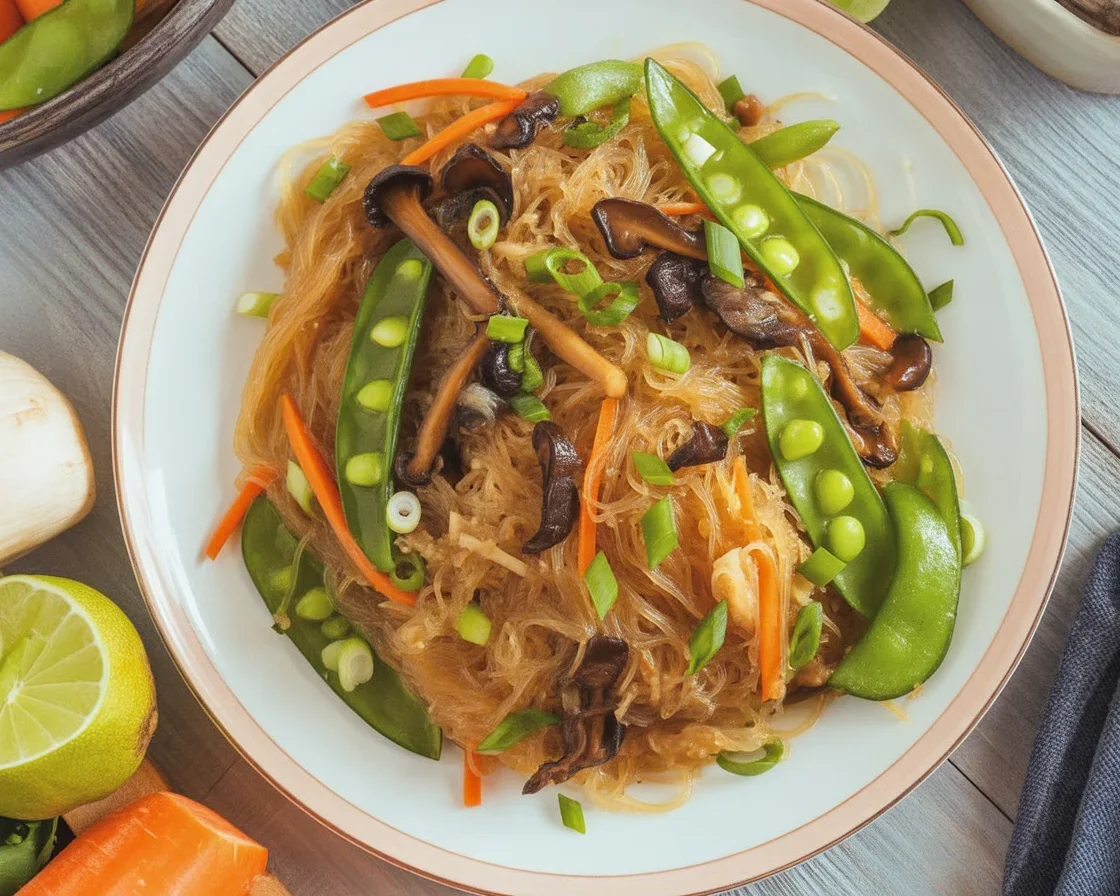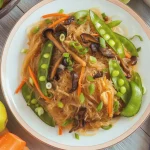Filipino pancit sotanghon guisado is that comfort food you crave when you need something quick but still a little special, right? Busy weeknight, fam’s home, and you suddenly realize you want noodles—not just soup or rice again—and the fridge is blessings-and-curses full of leftovers and half-bags of veggies. That is totally my story, honestly. This recipe is way easier than people think, and the best part? You genuinely don’t need fancy skills or a five-star kitchen to rock it. If you love classic Filipino adobo or just need another reason to win over picky eaters like kid-friendly Filipino dishes, this one’s for you. Get your wok or whatever pan you’ve got—let’s do this together. 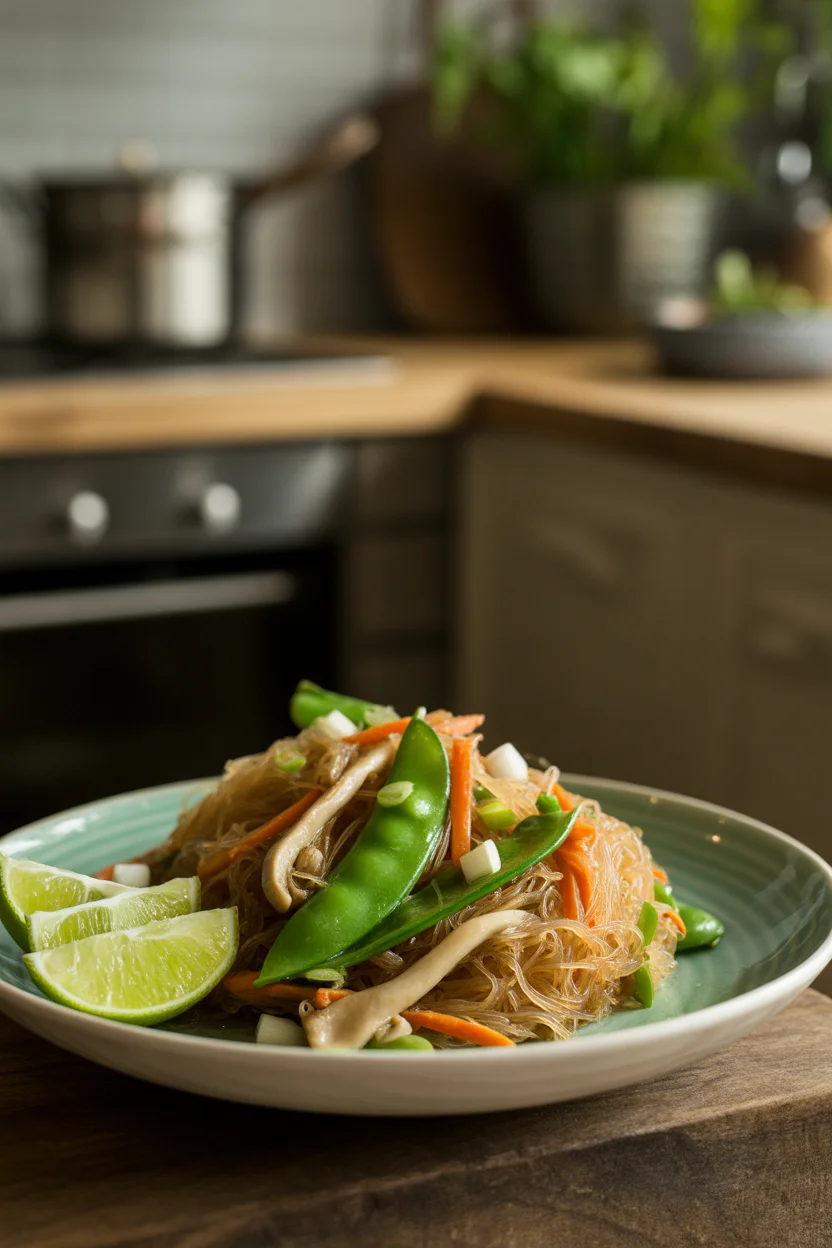
What is sotanghon guisado?
Okay, let’s clear up any confusion right here. Pancit sotanghon guisado is a Filipino noodle stir-fry, and it’s totally different from your regular instant ramen. We’re talking vermicelli made from mung beans—those glassy, slippery noodles that soak up all the flavors. To me, it screams special occasion and weeknight “rescue meal” at the same time. In Filipino homes, it doesn’t matter if it’s a birthday, a rainy afternoon, or breakfast (yea, some folks do eat pancit early)—you’ll find sotanghon guisado on the table. My gran used to say it brings long life. Honestly, who’s to argue when it tastes this good?
Now, what goes in it? Usually, chicken, sometimes pork, shrimp if you’re fancy, and a heap of veggies like cabbage, carrots, and sometimes mushrooms. I’ve even tried it with tofu for my veggie friends—still bomb. The best part is the noodles get stained that gorgeous golden color from soy sauce and annatto, but let’s be real—sometimes I skip the coloring and no one complains. This is not the fussy kind of dish. Oh, and if you’ve ever had the soupy chicken sotanghon, this is the stir-fried cousin. 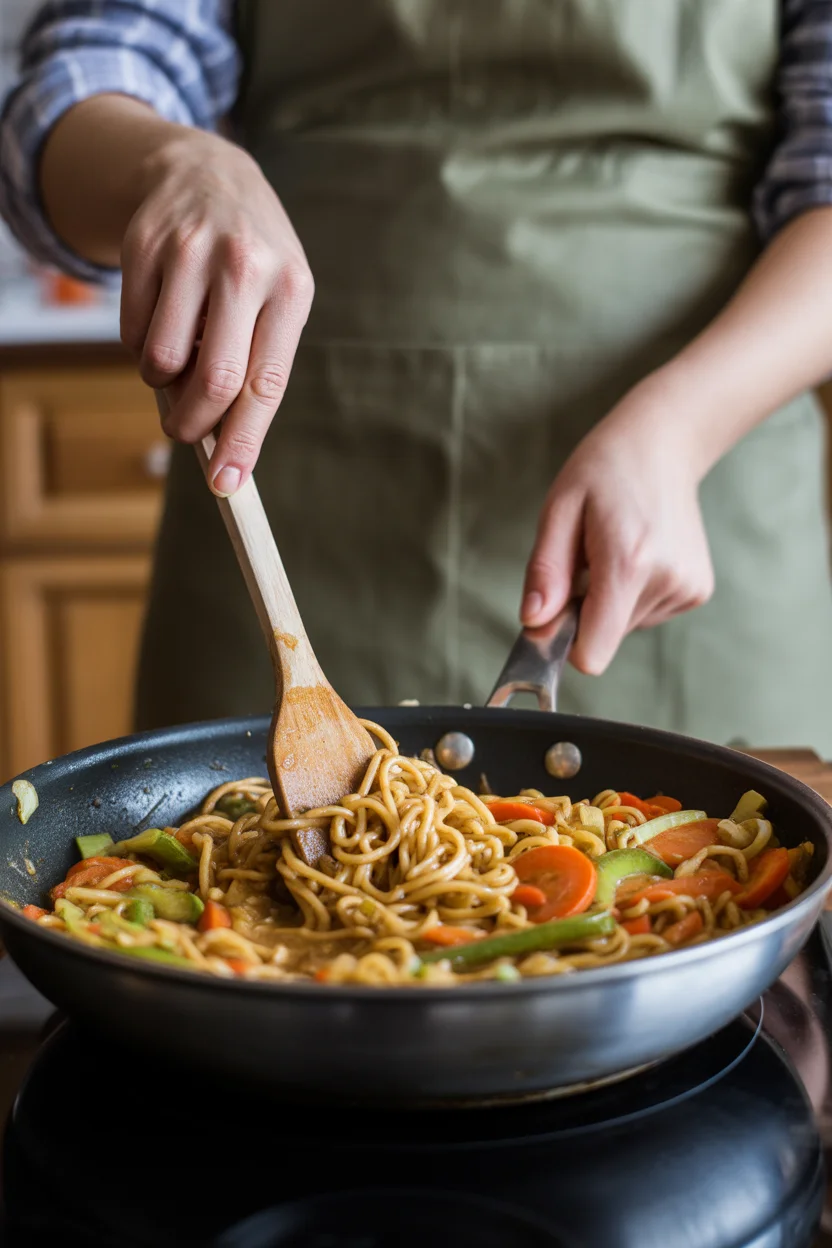
I finally nailed my mom’s pancit sotanghon guisado last week! Everyone went back for seconds, even my son who “doesn’t like veggies.” Seriously, it’s a family win. – Julie, Seattle
Ingredients
You don’t have to overthink it. Here’s what you need for pancit sotanghon guisado:
- One pack of dried vermicelli noodles (sotanghon)
- 2 tablespoons oil (I use canola, but whatever works)
- 3 cloves garlic, smashed or minced
- 1 small onion, sliced thing (not too fussy here)
- 2 cups cooked chicken, shredded—leftover rotisserie? Go for it.
- 1-2 cups chopped veggies: cabbage, carrots, celery, green beans (whatever’s sad in the crisper)
- 1/4 cup soy sauce (start here, add more if you need)
- 1 tablespoon fish sauce (optional, but boosts umami)
- Pepper to taste
- Squeeze of calamansi or lemon at the end
- For color: a pinch of annatto powder (totally optional)
You could add shrimp, pork, or tofu if that’s your style. My cousin tried it with leftover BBQ and called it a “game-changer.” Oh, and if you wanna get really Filipino, toss in some chicharrón on top. 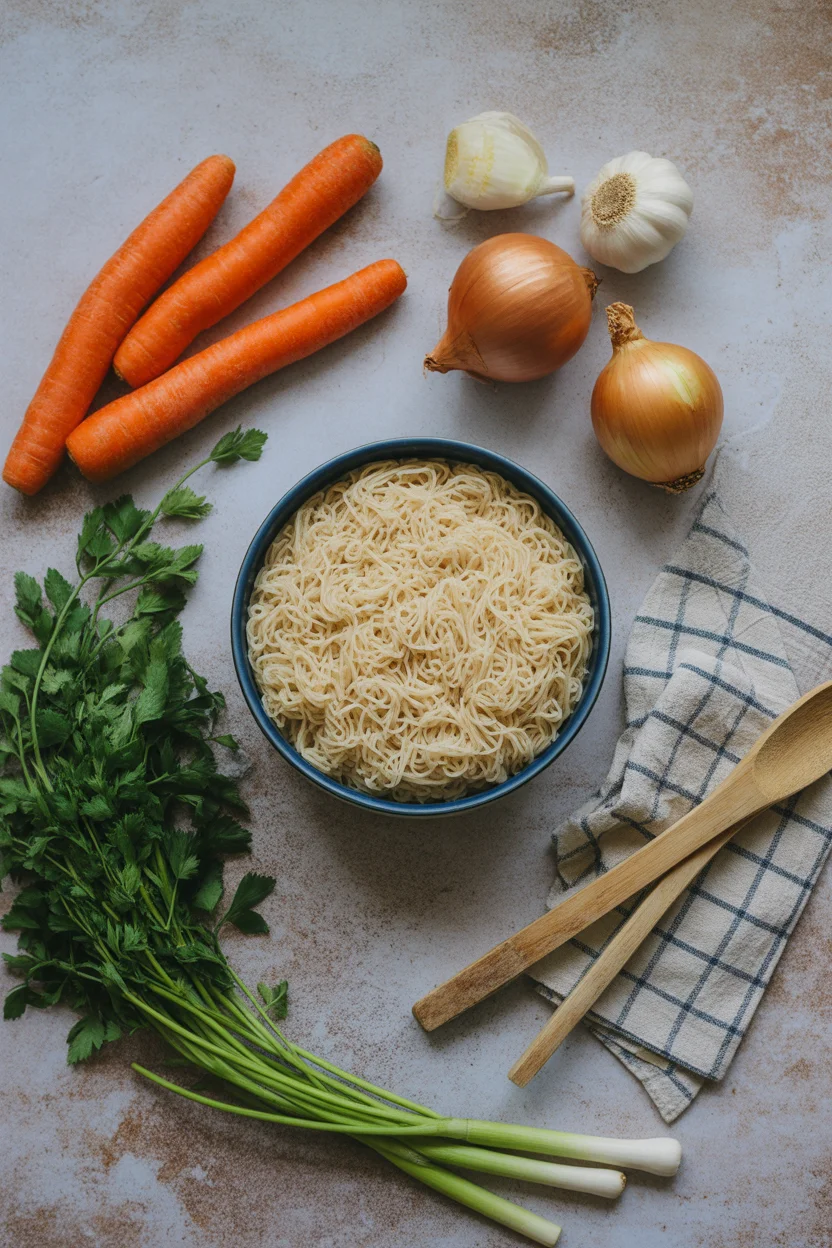
Preparing vermicelli
Sotanghon noodles are a little mischievous—they go from crunchy to mush in a blink. Here’s my hack. Take the dried noodles and soak them in warm (not hot, trust me, learned from experience) water for about 10 to 15 minutes. You want them bendy, but not falling apart. If you soak them too long they get weirdly gummy and break when you try to stir-fry.
As soon as they’re flexible enough to twirl but still slightly firm, drain them. Sometimes I cut them up with kitchen scissors so they’re easier to toss with the other ingredients. Oh, and don’t try boiling them… it’ll just make an epic mess. Just soak, drain, and wait patiently (I fail the patience test sometimes!).
Stir-frying vegetables and meat alternatives
Here’s when your pancit sotanghon guisado starts smelling like someone’s party. Get your biggest pan, heat some oil, and toss in the garlic and onions. Fry until you get that classic “neighborhood is hungry now” aroma. Throw in the chicken or whatever protein you’re feeling. Give it all a good mix until everything is just warmed through again.
Now for the veggies—always start with the firmest ones first (carrots, beans), then cabbage last since it wilts super fast. I’m not above using pre-shredded slaw mix if I’m playing beat-the-clock with dinner. If you’re using tofu, cube it and brown it first on its own for the best texture, then add it back after the veggies. Scrape all the good bits off the pan, no flavor left behind. Add a splash of water if it’s looking too dry. That’s it, simple!
Seasoning
Here’s where you bring life to the noodles. Pour in that soy sauce and a dab of fish sauce. Toss like crazy so every noodle gets coated and turns a little golden-brown (the prettiest). Taste and adjust—sometimes you’ll want more soy, sometimes just a dash of pepper.
Annatto powder is optional for color. If you have it, dissolve it in warm water and drizzle in; if not, life goes on. Right before serving, a burst of calamansi or lemon juice lifts the whole dish to something bright and zippy. Kids and spice-avoiders, don’t worry—chili oil is totally optional. It’s your kitchen, your rules.
Serving ideas
You made pancit sotanghon guisado! Now, honestly? It’s a party food but also weekday magic. Here’s what goes with it (tested and approved by my family):
- Pair with garlic sinangag garlic fried rice for a double-carb treat.
- Top with chopped scallions, fried garlic, or crunchy chicharrón—don’t be shy.
- Serve with a side of classic goto for ultimate Filipino comfort vibes.
- Slice up some fresh cucumbers or tomatoes on the side to balance the richness.
Make sure you make a little extra. People always go back for seconds even if they say they’re full.
Storage tips
Leftovers? Lucky you! Pancit sotanghon guisado keeps in the fridge for up to three days, sealed up tight. Honestly, I think the flavors get deeper overnight. Just don’t let it dry out—if you’re reheating, sprinkle a bit of water before microwaving, or toss it back in a pan with a tiny splash of oil. Never freeze though… the noodles get all weird and crumbly (learned that the hard way).
If you want to prep ahead for a party, you can chop everything and soak the noodles earlier—but always stir-fry everything together fresh so the noodles don’t get soggy. I pack bento boxes for lunch with it; super good cold too, but weirdly, my husband microwaves it anyway. It’s flexible.
Common Questions
Q: Can I make pancit sotanghon guisado vegetarian?
A: Absolutely! Swap the meat for tofu or mushrooms and stick with just soy sauce—still full of flavor.
Q: My noodles turned mushy. What happened?
A: You probably soaked them too long (or tried boiling them—guilty as charged). Keep watch during soaking and toss them with everything quickly once added to the pan.
Q: Can I use regular vermicelli?
A: For this dish, mung bean threads (sotanghon) are best, but in a pinch, you can experiment. Just remember, the texture changes a bit.
Q: Is there a shortcut for the veggies?
A: Yes! Pre-shredded cabbage/carrot mix from the store saves time, and no one complains. Use up what you have—it’s the Filipino way.
Q: How do I serve it for a party?
A: Pile it high on a platter, top with some fried garlic or green onions—looks super festive! Eat with friends; that’s the point.
Ready for a Noodle Adventure?
So there you go—my go-to guide for making your own pancit sotanghon guisado without stressing or overthinking. Remember, it’s flexible and forgiving, but the real charm is that it tastes like home (even if “home” was just noodles shared with friends on a cozy night). Just trust your tastebuds, don’t sweat the small stuff, and be open to swapping in what you’ve got. Lots more good info and recipes at Pancit Sotanghon Guisado – Kawaling Pinoy and Pancit Sotanghon – Panlasang Pinoy if you want more deep dives. Or check out Sotanghon Guisado: Stir Fried Glass Noodles | Lemons + Anchovies for a different twist. Honestly? Get in the kitchen and try it—let your nose (and gut) take the lead! 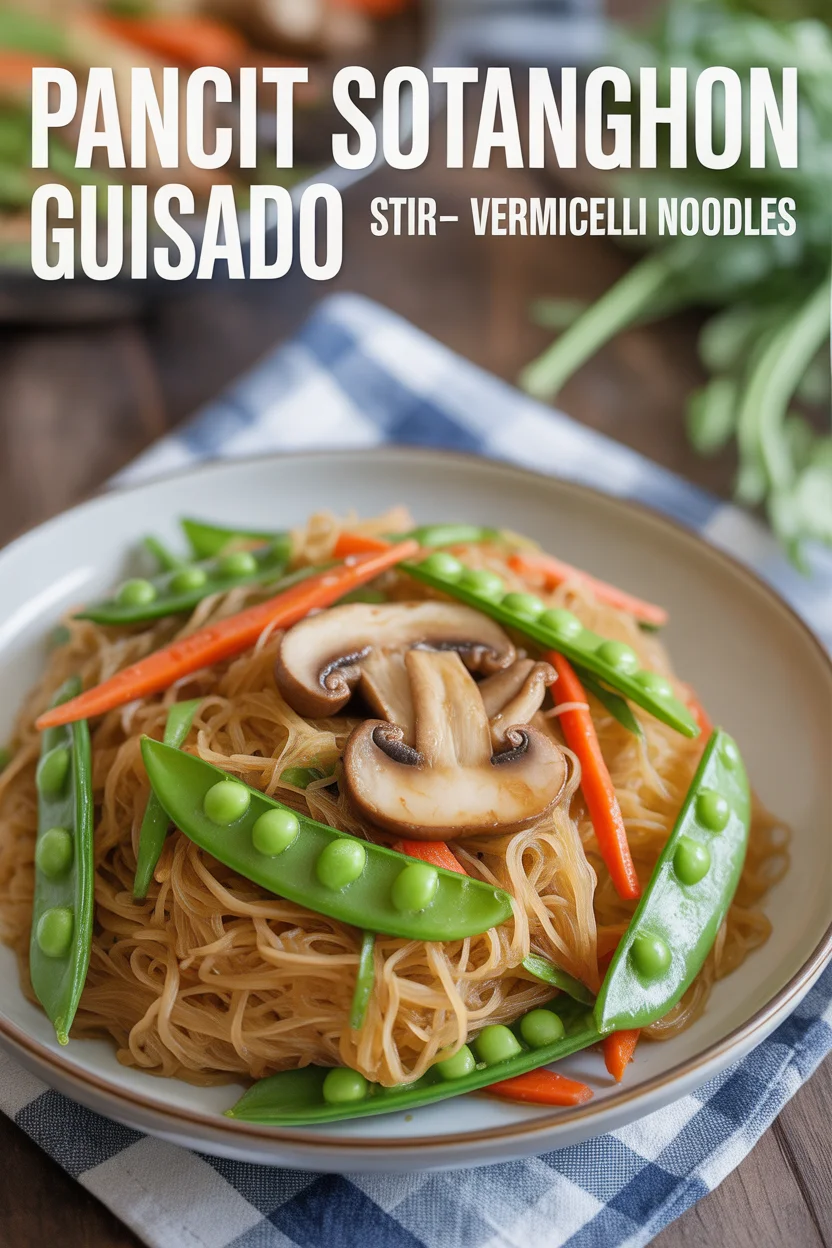
Pancit Sotanghon Guisado
Ingredients
For the Noodles
- 1 pack dried vermicelli noodles (sotanghon)
For the Stir-fry
- 2 tablespoons oil (canola or any preferred oil)
- 3 cloves garlic, smashed or minced
- 1 small onion, sliced thin
- 2 cups cooked chicken, shredded leftover rotisserie is recommended
- 1-2 cups chopped veggies (cabbage, carrots, celery, green beans) use whatever is available
- 1/4 cup soy sauce adjust to taste
- 1 tablespoon fish sauce optional for umami flavor
- to taste pepper
- 1 squeeze calamansi or lemon added at the end
- a pinch annatto powder optional for coloring
Instructions
Preparation
- Soak the dried vermicelli noodles in warm water for about 10 to 15 minutes until they become flexible but slightly firm.
- Drain the noodles and, if desired, cut them into shorter lengths with kitchen scissors for easier stirring.
Stir-frying
- In a large pan, heat oil over medium-high heat and add garlic and onion. Fry until fragrant.
- Add the shredded chicken and stir until heated through.
- Add the firmer vegetables first, such as carrots and green beans, and then add the cabbage last. Stir-fry until just wilted.
- For tofu, cube it and brown separately before mixing it back in with the veggies.
- Scrape any flavorful bits off the pan and add a splash of water if necessary.
Seasoning
- Pour in the soy sauce and fish sauce, then toss everything together to coat the noodles evenly.
- Adjust seasoning with additional soy sauce or pepper as needed. If using, dissolve annatto in warm water and drizzle in for color.
- Before serving, squeeze in calamansi or lemon juice for brightness.
